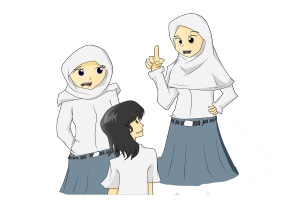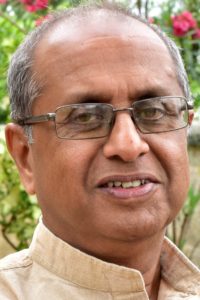
 By Shankar Raj*
By Shankar Raj*
Bengaluru: The Karnataka government today made a clear distinction on the rights derived under Article 19(1)(a) and Article 25 under the Constitution and said that the petitioners who are demanding the wearing of hijabs to classes cannot draw rights under both the articles.
Continuing his arguments in the case, Advocate General Prabhuling Navadgi, appearing on behalf of the State of Karnataka, said, “One of the arguments which has been advanced by the petitioners is that their right is traced independently to Article 19(1)(a) to wear the dress in exercise of the right of freedom of expression. That argument is mutually destructive and contrary to the present proposition.”
The right to wear the headscarf or hijab falls under the category of 19(1)(A) and not Article 25 as has been argued by the petitioners. “You cannot argue both Article 25 and Article 19(1)(a),” he said.
When the court asked if the two are mutually exclusive, the advocate General stated, “They are mutually destructive.”
The Advocate General said that “any dress is declared “essential” to a religion, the consequences are that every person (in that community) must accept it. It is an element of compulsion.”
Also read: Court discusses whether hijab an essential part of Islam or not
The Karnataka High Court today continued hearing petitions filed against wearing hijab in educational institutions. The court had earlier passed an interim order banning wearing hijab, saffron shawls while attending classes in Karnataka colleges.
While Article 19 (1)(a) pertains to freedom of speech and expression, Article 25 deals with freedom of conscience and free profession, practice and propagation of religion. (1) Subject to public order, morality and health and to the other provisions of this Part, all persons are equally entitled to freedom of conscience and the right freely to profess, practise and propagate religion.
Chief Justice Ritu Raj Awasthi asked the AG that “Suppose if someone wants to wear it under Article 19(1)(a) and you are restraining it then are you not restricting their fundamental right?”
To this, the AG said “ There is no ban on hijab in the country. The right to wear hijab under 19(1)(a) is subject to reasonable restrictions under 19(2). In our case, Rule 11 places reasonable restrictions for institutional discipline.”
“Our case is that so far as the present case is concerned, Rule 11 places reasonable restriction as a matter of institutional discipline. There is no ban on wearing hijab in the country, but every institution has internal regulation and discipline,” the AG held.
He stated that every institution has institutional discipline. It may be hospitals, schools, military establishments.
“The independent claim of Article 19(1) cannot go together with the claim of Art 25,” Navadgi said.
Earlier, the Chief Justice wanted a clear answer from the AG and asked: “Your argument is that the February 5, 2022 order is innocuous and doesn’t ban the hijab. . . if institutions permit hijab, will you have any objection?”
The AG submitted the circular gives complete autonomy to the institution and the state has not prescribed anything.
The bench, however, persisted that the government should take a stand. “It has been argued by the petitioner that they may be permitted to wear the same colour of the uniform as a headscarf in the institution. Therefore, we want to know the stand of the government whether that can be treated as part of uniform or not. Senior advocate Sanjay Hegde argued that if suppose they are wearing a dupatta which is part of the uniform over the heads, will it be permitted or not?” the bench asked.
“Whether students be allowed to wear a dress or apparel which is symbolic of religion? Our answer is we propose to foster a secular outset. The second issue is the whole object of the institution: anything that introduces the element of religious aspect should not be there,” the AG said.
The hearing will continue tomorrow even as the bench expressed its desire to wind up the case by this week.
*Shankar Raj is former Editor of The New Indian Express, Karnataka and Kerala, and writes regularly on current affairs.





